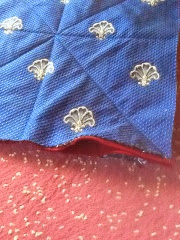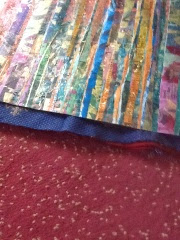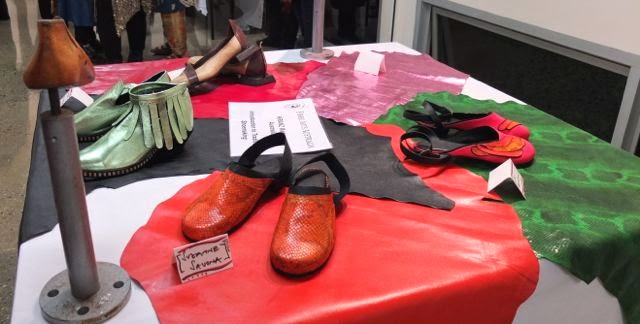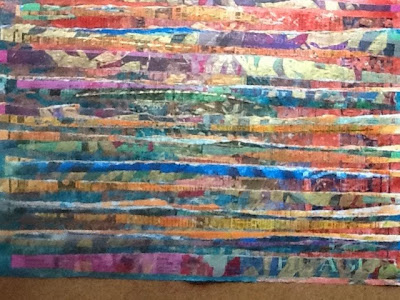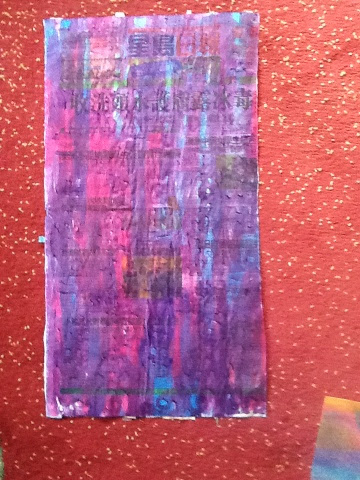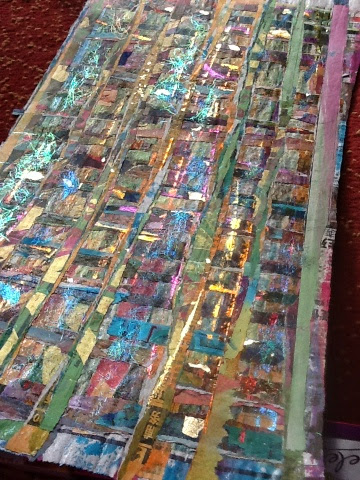It took a bit of thinking to actually finish it.
I had sewn the paper layers to the thick background. I cut out a shape that I thought would stand up - but didn't actually measure it carefully or find any templates.
I cut out the two pieces, making sure that they were exactly (as much as I could manage) the same shape as each other.
I cut the strips to be the gusset. The strips weren't big enough to go all the way around so I zigzagged them together, as we had been taught at the Kay Kahn workshop.
I cut some fabric on the bias to be the binding, I even remembered to print on the fabric using the acrylic paints and print block that I had used on the papers.
Then I sewed it to the side pieces and the gusset. I totally forgot that you were supposed to pin the gusset to the sides to measure the actual length you wanted, cut it to the correct size and THEN finish off the binding.
Being the patient person I am, I carefully cut off the ends I had sewn and resewed the bindings on the correct length gusset. No swearing involved at all!!
I remembered that Kim had said to coat the final layer of paper with acrylic wax, which I dutifully did.
It seems to have dulled it all down a bit. Next time, if there is a next time, I will try Golden Gel medium, which she said we could use instead. I painted the acrylic wax on the paper parts, not the fabric.
Today I spent a couple of hours sewing the pieces together and I am very grateful that I didn't put the acrylic wax on the fabric, it was hard enough to sew as it was.
Ta da!!
It stands up but not all that securely, I will have to be careful what I put in it. More research is needed on finding stable vessel designs.






